Hotel New World: When survivor and rescuer meet
A Yahoo News Singapore exclusive by Nicholas Yong and Safhras Khan. This is the last of a three-part series to mark the 30th anniversary of the Hotel New World disaster. Read part I and part II here. Video by Andre He and Jeremy Ho
Thirty years after she was pulled from the wreckage of the Hotel New World collapse, Jerina Tan Oi Ling was finally ready to meet the man who rescued her.
On 15 March, 1986, Tan was working as a hotel receptionist in the six-storey building when it collapsed. Trapped in the debris for almost eight hours, rescuers were on the verge of amputating the teenager’s right leg to free her.
Then a man crawled into the darkness, released her leg and pulled her out. Tan was one of 17 survivors, and the first to be brought out alive from the ruins.
When Yahoo News Singapore first contacted her, Tan, 49, had only one question, “Did you find the rescuer who saved me?”
“She looked so scared and was sobbing quietly. But I reassured her that I would help her.”
Former fireman Ali Ismail
The rescuer
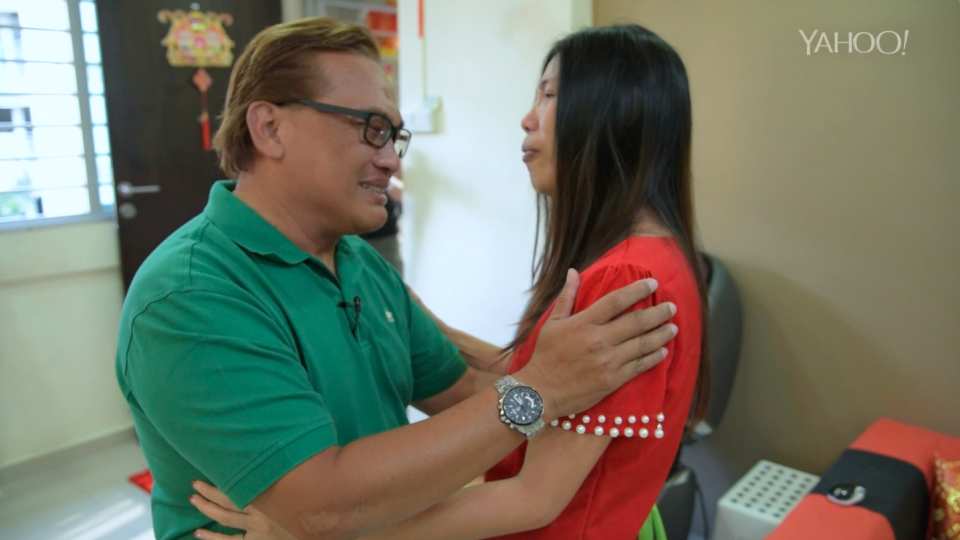
Ali Ismail, 56, spent 12 years with the now-defunct Singapore Fire Service (SFS). A firefighter at Central Fire Station, he was among the first responders at the scene of the disaster. When he arrived, members of the public told him about a girl who was trapped in the debris.
Looking for a way to get to her, Ali and a colleague knocked a small hole in a fallen wall. Dragging himself in, he could see a figure amidst the collapsed beams and walls. “A plank and some Yellow Pages books were pinning her right leg, while her left leg was pinned down by a dead body,” he recalled.
“She looked so scared and was sobbing quietly. But I reassured her that I would help her.”
The long road to recovery
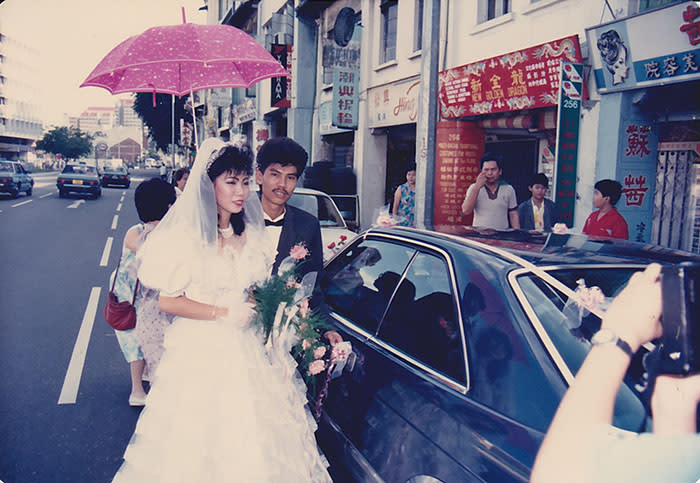
In the aftermath of the rescue, Tan had sustained injuries to her spine, arm, leg and foot. She spent three and a half months in hospital, immobilised in traction. She had to learn to walk again, said Tan, and could not work for a year.
Today, the physical wounds have largely healed. But the emotional toll of the experience has left many scars. It started while she was in hospital: Every time Tan fell asleep, she would have nightmares of her five colleagues who perished.
“It’s really too fast loh. You just drop down, you don’t know what’s happening. You don’t know whether it’s real life, or you’re dreaming.”
- Hotel New World survivor Jerina Tan
The mother of three did not dare to board a plane for a decade, and still does not go on long haul flights. She also has a phobia of elevators, and sometimes struggles with irrational fears, such as imagining highways or buildings collapsing on her. Tan even cancelled plans to travel to Taiwan following the recent earthquake.
“For quite a period, when I was (feeling) down, I would think: Better if they had not saved me. Better to be gone, because I’m afraid of everything,” said Tan, who also dislikes being alone.
A shared trauma
Haunted by the events of 1986, Ali also experienced recurring memories of the event and a particular phobia.
“There is this sound and smell in a basement car park that reminds me of the incident. It makes me very nervous. I can’t explain it but if I have to park at the basement, I’ll do it quickly and make a fast exit,” said Ali.
Searching for each other
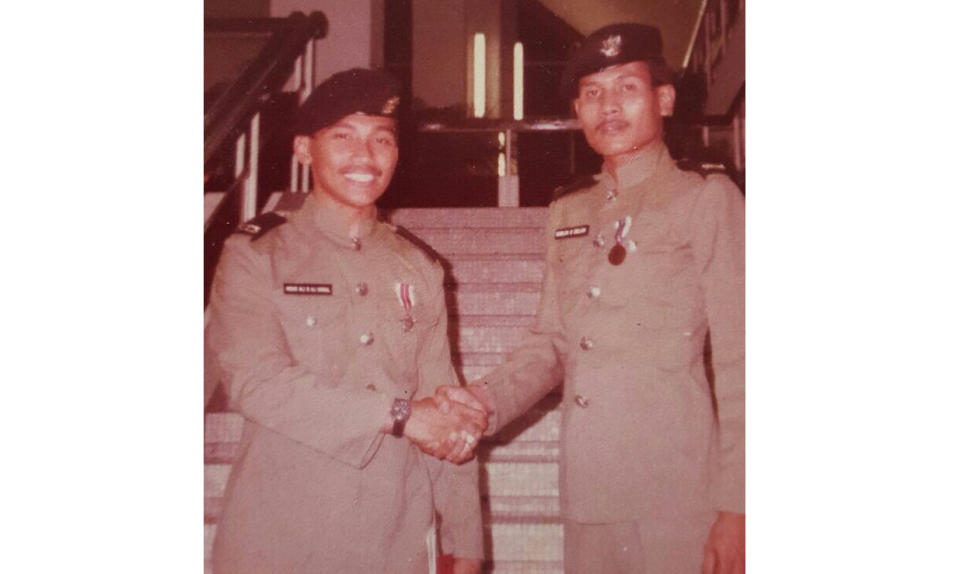
Ali Ismail (left) and fellow firefighter Ramlan Dollah, who both received national awards for their roles in the Hotel New World rescue. Photo courtesy of Ali Ismail.
Ali left the SFS in 1993 and now works as a personal driver. But the father of five has never stopped thinking about Tan. “She was the first person I rescued at the disaster. I have always thought about her and wonder how she is.”
For Tan, it has been a long process of overcoming her fears. She has not done a proper interview since 1988, for fear of dredging up old memories. She had also hoped to meet Ali, but did not know how to contact him. “I never got to thank him,” said Tan.
The duo has been searching for each other for three decades. But they did not know they had been living a few bus stops apart for the last three years.
Meeting at last
Yahoo Singapore arranged a meeting between the two at Tan’s flat in Hougang in February. When Tan and Ali finally met, it was initially stiff and awkward. They seemed unsure of how to react to each other.
Then Ali embraced Tan, and the emotions that had built up over three decades could not be contained.
“Thank you very much. Without you, I will not be here today,” said Tan, as she wept.
Ali, overcome by emotion, was in tears too. “Thank God too,” he said.
Post-traumatic stress disorder
While Tan’s ordeal was traumatic, some of those rescued from Hotel New World experienced even worse: The last person brought out of the ruins spent 83 hours in the rubble, in total darkness.
Other survivors whom Yahoo News Singapore approached were reluctant to speak. One said through an intermediary that the incident “evokes too many emotions”. Another said, “For me this episode is closed. I do not wish to talk about it in any form.” And the wife of yet another survivor said it was too difficult for him to talk about the incident.
“People tell you: It’s very easy, you just overcome it. But it’s very difficult.”
- Jerina Tan
Dr Joshua Kua, a psychiatrist with Raffles Medical Group, said that individuals who are exposed to severe trauma can develop symptoms of post-traumatic stress disorder (PTSD). These include “repetitive, intrusive memories” of the traumatic event, and avoidance of situations or people that may remind them of what happened.
Asked if it is usual for such symptoms to linger on for years, Kua noted that there are war veterans who suffer from PTSD even 50 years after the event. “I would say it is not unusual, especially if they have not sought treatment. Their symptoms can linger on or even become chronic,” said Kua.
‘All is blackout’
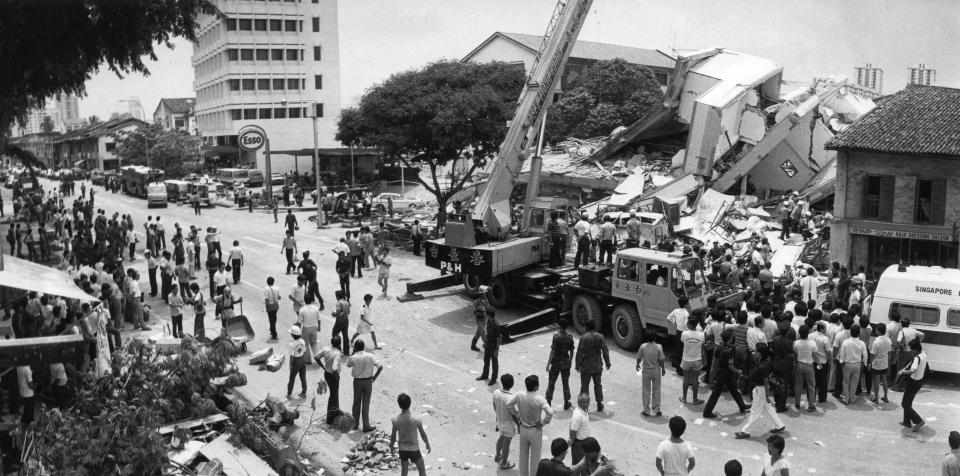
Photo courtesy of The New Straits Times Press (Malaysia) Berhad
Tan was not supposed to be working on the morning of 15 March: She had swopped shifts with a colleague, in order to attend a friend’s birthday celebration in the evening.
But at 11.15am, Tan waswith her manageron the third floor of the building, when everything came tumbling down. “It’s really too fast loh. You just drop down, you don’t know what’s happening. You don’t know whether it’s real life, or you’re dreaming. All is blackout.”
“I remember that the crowd was cheering me on as I stood up and walked out of the rubble (after freeing Jerina).”
- Ali Ismail
When the dust settled, Tan’s neighbour happened to be nearby. He heard her cries for help and contacted her family. Her brother and then-boyfriend Simon Si came to the site and shouted for her name. They located her and managed to uncover her head.
But Tan was still pinned down by debris in a narrow hole. “I was fighting for it,” she recalled. “I just finished my studies. I still haven’t enjoy my life. Why should I die so early?”
She added, “I have to live. That’s why I tell them: Maybe you should amputate my leg.”
Eight hours in the debris
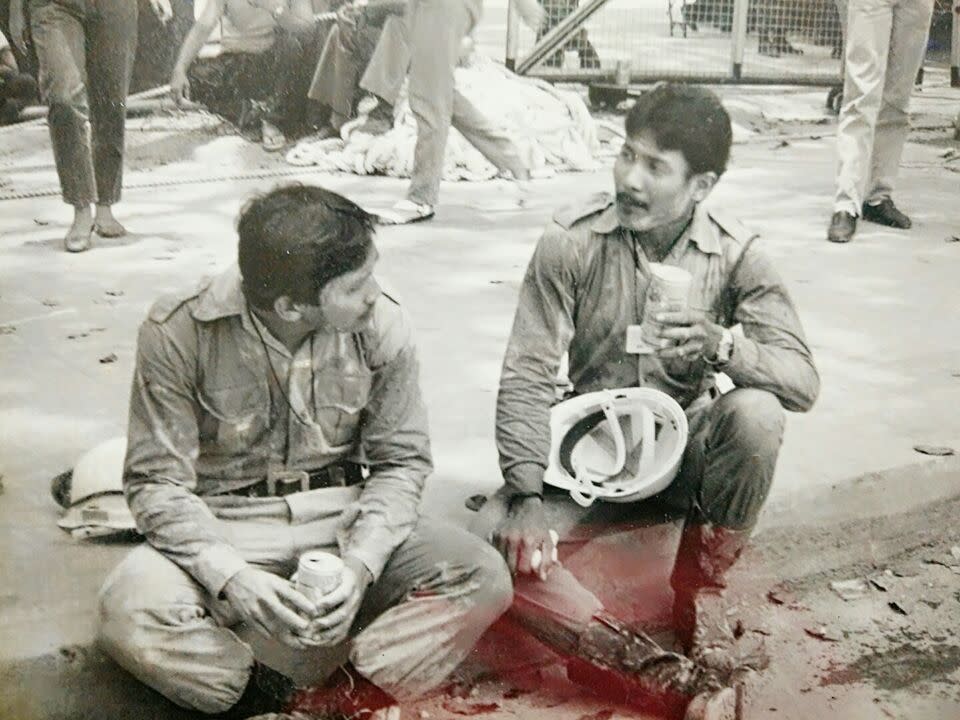
Ali Ismail and Ramlan Dollah at the disaster site in 1986. Photo courtesy of Ramlan Dollah.
Together with his colleagues, Ali spent almost eight hours trying to free Tan. It took four hours just to free her left leg.
“After about seven hours, the medical officer wanted to amputate her leg. But he gave me another 30 minutes to try and rescue her,” he said.
The half hour came and went, but still they could not get Tan out. Ali knew that time was running short for the other victims trapped in the rubble. But he asked for another 15 minutes.
Using another air bag to stabilise Tan’s right leg, he realised that he could reach the Yellow Pages books that were getting in the way. “I started to tear out pages from the books. I was already exhausted, but I was determined to save her. I had to do it with one hand because my other hand was supporting myself.”
Free at last
At long last, Ali tore out enough pages to free Tan’s leg. Holding on to her, he yelled for his colleagues to pull him out.
“I remember that the crowd was cheering me on as I stood up and walked out of the rubble. I felt good but I told myself that I needed to get some rest before heading back to rescue more victims,” he said.
That was the last time he saw Tan.
30 years apart

Ali ismail and Jerina Tan were meeting for the first time since 1986. Photo: Nicholas Yong
Sitting on the couch in Tan’s living room, it was the first time that Tan and Ali had ever spoken. But it felt as if two old friends had reunited, as they recounted the past.
“The doctor taught me how to amputate your leg, you know. But I thought I could save your leg,” said Ali quietly.
For Tan, it all boiled down to one question, “Can you tell me? What makes you so brave to go inside the hole?”
Ali answered, “It’s a duty. I feel like I have to do it. As a rescuer, I need to rescue people.”
‘I think we can share’

Ali, Tan, her eldest son Alvin and her grandson Felix. Photo: Safhras Khan
Both Tan and Ali have struggled to relate their experiences to their loved ones. He laments, “My grandchildren don’t understand. We are the ones who are inside there.”
“Sometimes, we think that people think we’re crazy, correct?” said Tan with a laugh. “People tell you: It’s very easy, you just overcome it. But it’s very difficult.”
Throughout the meeting, Tan’s husband Simon Si, 54, could only look on quietly. “He risked his life to save her. The hole was very narrow. It was very difficult for him to enter. But he did it,” said Si in Mandarin.
And Tan has much to live for: That day, her oldest son Alvin, 28, introduced her three-month-old grandson to Ali.
“Without him, there might not be this precious grandson,” said Si with a smile.
This is the last of a three-part series to mark the 30th anniversary of the Hotel New World disaster. Read part I and part II here.


